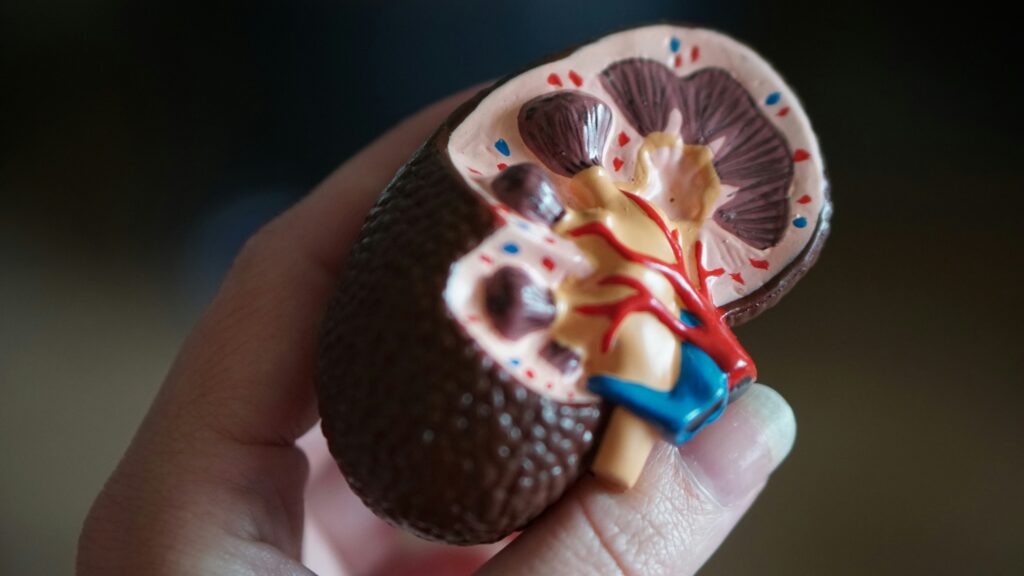rise of potassium levels beyond 5.5 mEq/L, which is the threshold for the diagnosis of hyperkalemia.
However, the way to balance potassium is to overcome this situation by using the kidneys as vehicles to allow the waste to be filtered out through the urine. Even the process of potassium excretion altered cellular functions, or an increase in the intake may be observed under these circumstances. Politely saying that these conditions will create a life or death threat to people due to the heart condition such as an irregular heartbeat and/or turbulent cardiac arrest.
Keep in mind that hyperkalemia is not out of the ordinary, too, particularly among the victims of chronic kidney disease (CKD), heart failure, and diabetes, as well as those who take medications affecting potassium usage. The occurrence of hyperkalemia is not the same in every population, and it is unique, especially for certain social groups.
Scientific reports show that approximately 40-50% of all CKD patients experience hypokalemia at some point. The rest of the population has this problem that is not so serious. Only about 2-3% of the people experience it. Patients under medical care, as well as those directed to have dialysis treatment, are generally at increasing risk of developing hypokalaemia since their potassium levels have been impaired by metabolic acidosis.

According to some sources, hyperkalemia can be a result of a variety of conditions, including kidney disease. Of the main causes, renal failure is the most important one, as the kidney is a major organ for the adjustment of potassium levels. Kidney cells are supposed to secrete potassium; therefore, even if a kidney is malfunctioning, the potassium blood level.” can still be maintained at a normal range (4.0–4.4 mmol/L).” Therefore, the potassium and calcium are sequestered in the bones, the primary storage, and their plasma concentration decreases.
Induced hyperkalemia by drugs is a fact, primarily by those that control the RAAS (renin-angiotensin-aldosterone system) such as ACE (angiotensin-converting enzyme) inhibitors plus ARBs (angiotensin receptor blockers), potassium-sparing diuretics, etc. These medications impair the potassium excretion mechanism by affecting the release of the hormones that regulate sodium and potassium concentration.
Excessive potassium elevation in some cases may be due to ingesting foods that are high in potassium. It is especially true if a person already has a kidney problem. Hyperkalemic patients who consume fruits like bananas, melons, and oranges which are high in potassium may worsen their condition.
A condition called potassium shift can also be a reason for hyperkalemia, which is when potassium moves into cells triggered by acidosis, burns, trauma, or hemolysis. In the case of acidosis, hydrogen ions move inside the cells, where they move the potassium out. Therefore, there is a large amount of it in the blood. There is a great similarity in the process when cells die because this causes intracellular potassium to go into the blood, and this subsequently elevates the blood potassium level.
The way hyperkalemia alters the potassium levels in the body. It means that either the most or fewer symptoms become noticeable. In some cases, mild hyperkalemia may have no classic symptoms. However, as more potassium builds up, the signs will be more and more obvious.
These two are muscle weakness and tiredness. The muscles are usually weak and tired due to the lack of potassium in the body. It is responsible for the normal muscles' function. The patient mayonnaise in the language. Sometimes, partial or complete paralysis of the muscles may happen to the very people who are almost convulsing. Hyperkalemia also causes the nervous system to function in the wrong way. Meanwhile, it is mainly manifested by tingling, numbness, and even confusion.
Heart rate abnormality is a common finding in hyperkalemia. One of the ways that high potassium can cause heart rhythm problems is when the electrical signals do not go through the heart properly. Among the different dangerous forms of heart collapse, the hardest ones are ventricular fibrillation and asystole, which can serve as an immediate cause of death if even first aid is not properly administered.
Throwing up, getting sick in the stomach, and having diarrhea are examples of gastrointestinal symptoms, which are some of the less frequent signs of the disorder.

Hyperkalemia can result in grave and potentially life-threatening complications and as a result, it must be treated without delay. Hyperkalemia, this high potassium that makes the heart muscles excitable due to an arrest of the electrical conduction of the heart rhythm and thus causes atrial fibrillation, is the more critical type of potassium for the heart. Often, the heart may stop beating, or the blood pressure may lower, and this can be the major cause of death if immediate treatment is not given.
Also, neuromuscular problems are of general occurrence. A problem related to potassium here is that the potassium takes on a retreating state that affects nerve pathways, and it is then the muscles that shall weaken in this manner throughout the body. Potassium is the one with the slimmest connection to the heart. The high potassium is caused by too much involuntary muscles thus the kidney causes low level of potassium.
It is also a contributor to the progression of underlying kidney disease. The more involved the kidney function in the process of potassium removal is, the higher the risk you have of losing them. Furthermore, if uncontrolled, acidosis can affect the whole body leading to delayed healing. Therefore, in such cases, it plays a part of the conventional treatment.
Hyperkalemia may be diagnosed through the patient's history, a physical examination, and laboratory studies. The analyst examines the medical history of the person concerned to reveal the key conditions of the body and the type of treatment he or she is taking, as well as the type of diet the patient is on.
Overcoming the acid-base imbalance is reached by the use of a blood test, together with which the initial step toward hyperkalemia confirmation exists, as evidenced by an ECG. A level above 5.5 mEq/l means that one has hyperkalemia, while a level that exceeds 6.5 mEq/l is an alarming signal and, therefore, the patient needs immediate medical intervention.
An electrocardiogram (ECG) is a common test to detect hyperkalemia, and it also enables doctors to monitor your heartbeat. Elevated potassium levels can distort your heart's patterns on your ECG and make the heart beat abnormally. ECG results indicative of severe arrhythmias in the risk zone are likely to be seen.
The arterial blood urea nitrogen (BUN) and creatinine blood levels define the liver's functionality. The reduced glomerular filtration rate (GFR) results in low Na+ entering the blood that is problematic.
In contrast, the ABG analysis is the main method in which the pH balance of the body is measured; thus, it can indicate the poor state of the kidney. The production of acidosis leads to potassium diffusion from the cells into the blood. The acknowledgment of the acidosis complicates the treatment process.

Hyperkalemia is the treatment that focuses primarily on the underlying issue identification and then stabilization of the cardiac process and elimination of potassium through the kidney. The unsuitable treatment of mild or moderate cases coupled with the existence of serious symptoms like muscle weakness, paralytic ileus, and heart arrhythmias, causes the possibility of hypokalemia to interfere or even disappear.
Severe hyperkalemia along with ECG errors leads to the use of calcium gluconate raised through arteral roots to restore regular heart rate in the cardiac muscles. The best solution is prevention. It does not really balance the potassium. However, it counteracts the negative effects of hyperkalemia on the heart so there are no heart arrhythmias.
Insulin and glucose co-administration stimulate insulin cytokinesis, which increases potassium uptake into the cells, and sodium-potassium pumps work at maximum speed. Albeit this being a non-definitive method, this strategy does lower the serum potassium level that grants the most useful actions more time.
Although sodium bicarbonate has been shown to be the treatment of choice for metabolic acidosis, patients need continuous pH monitoring for any imbalance. Even though acetaminophen is usually considered a safe medication, it is actually the most common reason for acute liver failure due to overdose, and it is crucial to seek immediate assistance when an overdose is toxic because it can be very life-threatening.
Beta-2 agonists, such as Albuterol, enable the potassium exchange between the cell membranes and it is a crucial step in the breathing process. However, Albuterol also plays a vital role in fixing the disease if, in addition to insulin, a therapy that is also lowering the blood glucose levels quickly is initiated.
Loop diuretics and thiazides are drugs that help the body eliminate extra potassium through Urine. Moreover, the complex of the nephron and/or heart system can affect the body, and you may encounter untreatable complications if you receive treatment in the early stages.
Sodium polystyrene sulfonate is usually the last option and the long-term one in the drug's administration. This process involves potassium binding to the gut and then excretion from the digestive tract, depending on which place it binds to. Most people with chronic kidney disease have a limited amount of potassium in their bodies, as the kidneys do, and chronic kidney disease affects impaired kidney function.
Hemodialysis is the best and most effective cure for severe renal failure or refractory hyperkalemia. A rapid removal of potassium through a hemodialysis machine is the only way to save patients with such problems.

The outcome of hyperkalemia mostly depends on how bad the problem is, the reason behind it, and, thus, the period of time prior to the start of the treatment. Nevertheless, hyperkalemia is much more of a benign disorder if it is caught early, the level is low, and it is appropriately handled, as a consequence of which the patients recover with minimal or no long-term complications. Nonetheless, without medical intervention, even moderate potassium elevations can cause severe cardiovascular and neuromuscular problems.
Patients with chronic kidney disease, heart failure, or diabetes are often the recurring subjects of hyperkalemia, and this is why they need constant care. The quality of life, in the long run, also depends on controlling the primary condition. Patients who regularly take medications, follow dietary restrictions, and go for checkups most of the time have a better recovery record.
Reducing the existing conditions causing hyperkalemia to the minimum and the quick intervention to normalize potassium levels are the primary steps in preventing hyperkalemia. Many people recognize nutritional control as a very effective way of treating hyperkalemia. This is where the patient chooses from a variety of apples, cabbage, rice, and cauliflower as low-potassium food and avoids the foods high in potassium, like bananas, potatoes, tomatoes, oranges, and spinach.
One more saving grace is drug control. Consequently, for patients on ACE inhibitors, the use of angiotensin receptor blockers (ARBs), diuretics, or potassium-sparing calls for a physician to schedule the potassium level checkup regularly. In a case of necessity changes in the prescribed medications or dosage reduction may help in avoiding hyperkalemia.
Routine examination of kidney capacity is a necessity for busy lives, especially for people who suffer from chronic kidney disease. Regular biochemical tests help with the early discovery of potassium disorders. It allows for the prevention of potassium levels without a great threat.
Table of Contents